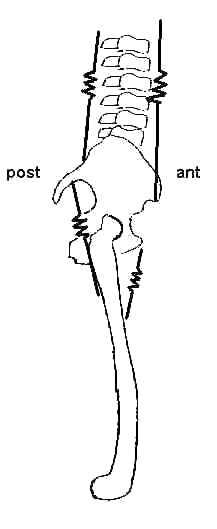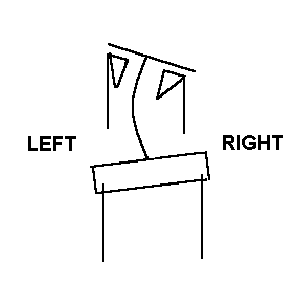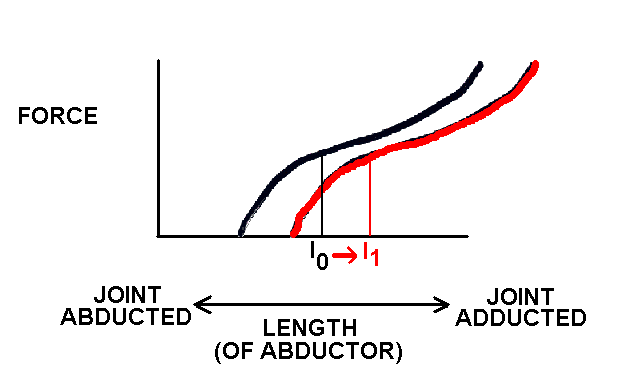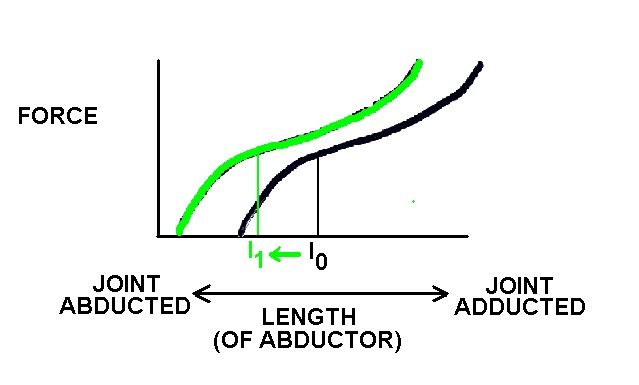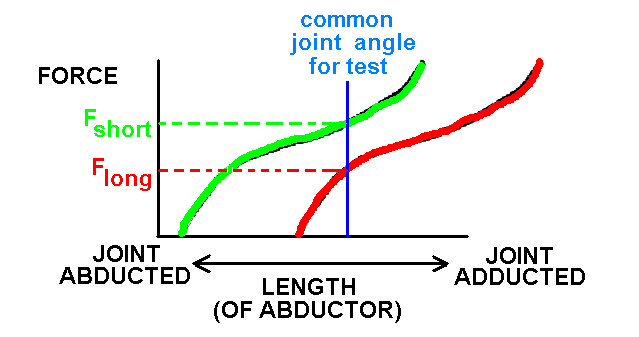Postural alignment depends on the resting length of the soft tissues, including muscle, that surround each joint. Abductors and adductors, or flexors and extensors, produce opposing forces and moments.
The result of this "tug of war" determines a joint's habitual position or posture. A posture is a kind of immobilization, and animal studies show how muscles' resting lengths and length-tension properties adapt or change when they remain at a fixed length for weeks or months.
